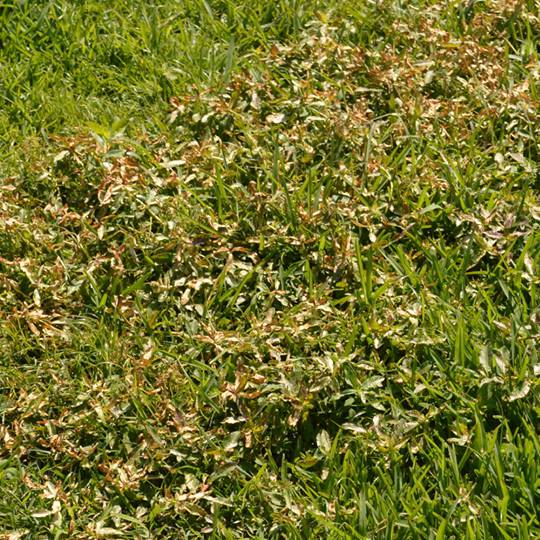How to Prevent a Crabgrass Invasion
Posted
April 28, 2016

Spring has sprung and the grass is…. wait, are those weeds? Crabgrass spreads quickly during the summer, but the good news is that it dies at the end of the season. The bad news? It leaves behind thousands of tiny seeds that can wreak havoc on your lawn come next spring. That is why now is the best time to prevent this invasive weed from taking over your lawn.
The first step in prevention is proper identification. Crabgrass has broad leaves that are often lighter in color than normal grass, and it tends to grow and spread out on your lawn in a star pattern. Once you are sure what weed you are working with, you can better plan your attack.
As with most weeds, the best prevention is to keep your lawn healthy with proper maintenance including watering, mowing, and fertilizing. A thick, lush lawn rarely has crabgrass because it tends to crowd out weeds—there’s just not enough room and light for them to grow. Here are some maintenance tips to keep the weeds at bay.
- Mow regularly, but adjust your lawnmower to a higher setting. Keeping the blades tall and lush prevents unwanted species from taking over.
- Say goodbye to short, frequent watering. Watering lawns deeply and less often helps the root systems become better established.
- Fertilize. Feeding your lawn is part of a healthy maintenance regimen.
Pulling out crabgrass can be effective. However, if you choose to enter into hand-to-hand combat with this invasive grass, there’s a few things you should know. First, only pull out young crabgrass. The younger weeds leave behind less of a hole for the weed seeds to fill in. Mature crabgrass contains forked seed heads holding thousands of tiny seeds that will scatter on the newly created open soil patch. Leave these seed heads alone, but young closed seed heads are okay to pull out. It also helps to water the soil first before yanking the weeds. This makes it easier to get the entire root out so there’s no chance for regrowth.
What do you do if your crabgrass has matured? You can wait until it dies out in the fall, but if patience is not your virtue or you don’t want it to be next year’s problem, you can spray it with herbicide. Apply a post-emergence herbicide directly on crabgrass after it has sprouted.
If you are a take-charge kind of person, you’ll want to prevent crabgrass from growing in the first place. That’s when a pre-emergent herbicide comes in handy–it prevents crabgrass from sprouting, which inevitably kills it. But timing is everything with this type of treatment. The herbicide must be applied during the early stages of germination before the season gets underway. As always, follow the directions on the label carefully so as not to harm other plants or grasses in your yard. When in doubt, ask a professional!
Call Cardinal Lawns today at 614-808-4446 to find out more about how our lawn care and weed control programs can make your lawn look its best.

Download Your FREE Lawn Weed Guide
Before weeds take over your yard this season, learn to identify and prevent them in the first place. Keep your lawn looking great all year!